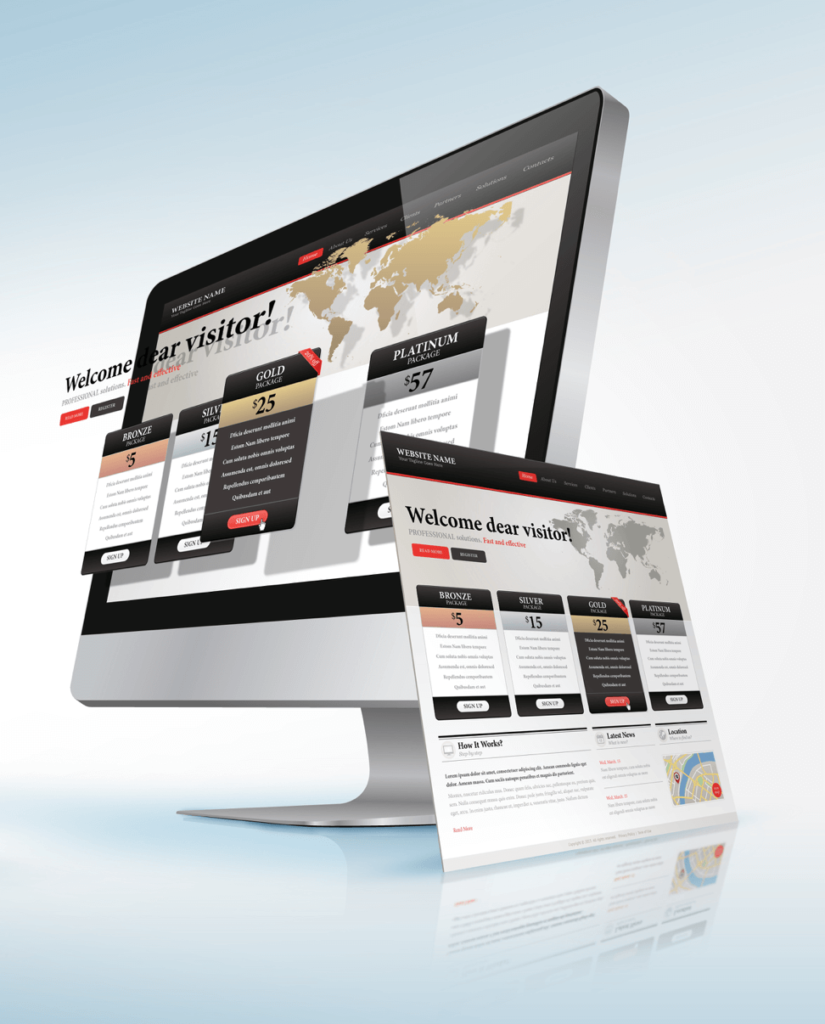Is your website working for you, or are you working for it? In other words, does your website bring in more business for your company, or are you just throwing money into a black hole on the Internet?
A website should earn its keep, and then some. If it isn’t, you’ve got a serious problem, because your competitors are probably stealing your customers. The good news is, if you’re not satisfied with your website’s performance, you can take steps now to improve it, whether it just needs a few tweaks or a complete overhaul.
I’ve been doing this a long time, and I’ve picked up a lot of insights along the way to find out what works for my clients. I’ve talked previously about how to drive people to your website, but now I want to discuss some elements of a website that can turn visitors into customers.

The most logical place to start for your website design is to outline your goals for it. Your company has a mission statement, so put one together for your website. Distill your expectations down to a one- or two-sentence statement that clearly defines your vision for your website. It may be as simple as saying, “This site will generate 20 leads per week.” Another company’s goals may be more utilitarian – “Our website will inform visitors on the benefits of our products and differentiate them from our customers’ products.” Once you know the direction you’re headed, you’re ready to tackle the actual site.
The Importance of UX & UI
Two vital elements of any website are the User Experience (UX) design and User Interface (UI) design. The distinction between the two can be confusing for people, but they’re both essential for an effective website. The way I like to explain the differences for UX and UI is to compare a website to a map. The UX is the features on the map – different types of roadways, locations of cities, and elevation of the topography. The UI gives you the specific route to your destination and guides you there. The UX is how a person interfaces with the site, and the UI provides the graphic elements to direct the user. You need both components to reach your objective.
The Call to Action (CTA)
I want to take some time now to discuss the elements of effective call to actions for websites, because they’re one of the most critical features of any website. The call to action on most websites is in the form of a button the user clicks on to go to the “action” page, whether the action is to make a purchase, fill out a form, or to download something. There are many right ways to do a call to action, just like there are many wrong ways. Let’s take a look at what makes an effective call to action.
Color – Your call to action button should stand out from the rest of your website, but it should still look like a natural element of the site. It should contrast, not clash. For instance, if a website has a muted red color scheme, a bright red call to action button will still stand out against the other shades of red.
On my CelebritySites website, I use a yellow CTA button on a white background to grab a visitor’s attention. I also add some subtle graphical flair to make it stand out even more. For instance, there’s a slight gradient in the yellow, going from lighter yellow at the top, to deeper yellow at the bottom. There’s also a drop shadow around the button to give it a slight 3-D effect. The bottom line is to make your CTA button prominent, don’t camouflage it.
Shape – There should be continuity between the design of your website and the call to action button. For instance, if there are circular elements to your website, make the CTA button round. If your website has a softer feel, give your CTA button rounded edges. The size of the buttons should also be relative to the rest of the page elements. On my site, I make the CTA button about the same size as my subhead fonts. That makes them noticeable without seeming out of place.
Wording – What do you want to say on the CTA to make a person click on it? It can make a big difference for you. Tell the visitor what they can expect once they click on the button. My call to action says to, “Click Here to Learn More.” It’s much more effective than just, “Click Here.” I want people to know there’s more information just waiting for them. All they have to do is click.
Location – There are different schools of thought on where to place the call to actions on websites. Some people swear by putting it “above the fold,” meaning you can see it without scrolling down the page. Other people have had great success placing the button toward the bottom of the page. You should position your CTA button where it makes sense. In writing, when do you start a new paragraph? It’s where there’s a natural break in the flow of the topic. Choose your CTA locations the same way.
Testing – After you’ve made your CTA button using the tips above, how do you know you’ve done it right? It’s time to put your site to the test. There are a number of ways you can test your site’s effectiveness, from the simple to the complex. Here are a couple options you can try to gauge your CTA’s performance:
The 5-second test: Let a person look at your website for five seconds, and then have them describe what they remember about the page. If you find the call to action is going unnoticed, it’s time to rethink it.
Test Site: You can perform a more in-depth evaluation by setting up a separate test site to assess the effectiveness of different layouts. Your regular website would still be active, but a number of visitors would be automatically directed to the test site. With the test site, you’ll be able to analyze changes you make to your website, especially the CTA. You can adjust any of the elements I talked about previously, but be sure to only make one change at a time so you’re able to evaluate that specific tweak. If you change the color, wording, and location of your CTA button at the same time, you can’t be sure which change was the most effective.
Making it All Work
Your website is indispensable for your company’s success. That’s why it’s important to do it right. Take a closer look at your website’s performance, and if you’re not satisfied with it, let’s talk about ways we can improve it.
